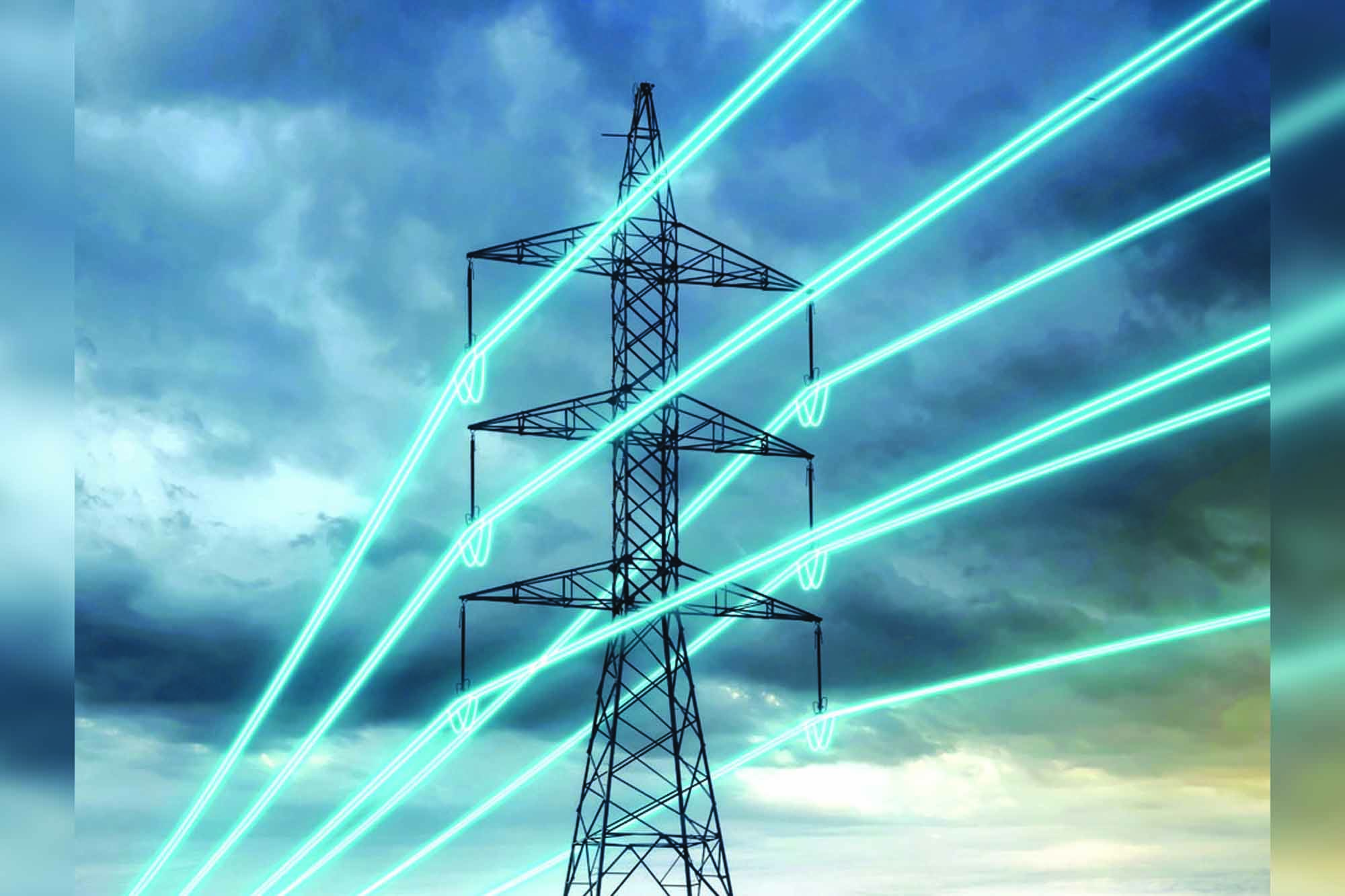The power quality challenge
By EPR Magazine Editorial May 25, 2024 6:32 pm IST
By EPR Magazine Editorial May 25, 2024 6:32 pm IST

Power quality lacks the same investment incentives as energy efficiency, and harmonics pose a significant challenge in today’s power landscape due to their continuous nature.
Whenever we discuss power quality, particularly in integrating renewable plants, it’s important to note that conventional plants generally don’t face power quality issues related to harmonics. Harmonics present a significant power quality challenge today due to their continuous nature. Unwanted currents flowing into systems affect conventional systems like transmission and distribution. While conventional systems are available, power quality issues primarily manifest in distribution during utilisation.
Traditionally, generation, transmission, and distribution were clean processes. However, transitioning from fossil fuels to renewable plants has brought power quality issues to the forefront. Renewable plants generate challenging harmonics requiring special solutions as conventional remedies prove ineffective.
Fortunately, regulations now mandate power quality norms, compelling the adoption of solutions like STATCOMs to mitigate harmonics. These solutions can handle harmonics up to a certain level, but specialised solutions like high-pass filters are necessary for more complex harmonics. These filters, incorporating resistive elements, bypass higher-order harmonics, albeit at significant cost and complexity.
Addressing these issues involves simulation to determine the most effective filters and field testing for validation. Adjustments to inverters and turbines may also be necessary to mitigate deviations. While solutions have been available for years, their application has become critical with the rise of renewables. Countries like Australia and Africa have implemented such systems as integral parts of their renewable plants.
Baldev Raj Narang, CEO of Clariant Power System Ltd, elaborates, “Historically, generation, transmission and distribution processes were relatively clean. However, power quality challenges have surfaced with the shift from fossil fuels to renewables. Renewable plants generate complex harmonics that require specialised solutions, unlike conventional remedies.
“Thankfully, regulations now mandate power quality norms, necessitating the adoption of solutions like STATCOMs to address harmonics. While these solutions can handle harmonics up to a certain level, more intricate harmonics demand specialised solutions such as high-pass filters, albeit at a significant cost.”
Unaddressed harmonics
Innovative solutions such as battery integration and assessment of large-scale options are paramount in a quest to stabilise energy systems over time. This involves scrutinising energy management systems to forecast and optimise plant performance, ultimately reducing energy costs and enhancing portfolio efficiency. Let us embark on a journey to uncover how industry leaders are navigating these challenges and shaping the future of sustainable energy integration.
Subrata Das, Power Plant Consultant, SSSD India, elaborates, “Addressing these challenges involves simulation to determine optimal filter solutions, followed by field testing for validation. Fine-tuning of inverters and turbines may also be necessary to mitigate any deviations. Although such solutions have been available for years, their criticality has heightened with the proliferation of renewables. Countries like Australia and Africa have already implemented these systems as integral components of their renewable energy infrastructure.”
Power quality issues, particularly harmonics, stem mainly from nonlinear loads, which have become more prevalent with time. Historically, most loads were linear, but the rise of nonlinear loads has increased harmonic generation. These harmonics, flowing back towards the grid, cause voltage distortions and create a complex situation affecting both loads and the grid.
Unaddressed harmonics pose several problems, including nuisance tripping of protection systems, increased losses, heating, and equipment performance distortion. Often used for power factor improvement, capacitors inadvertently amplify harmonics, leading to their own failure.
Regulations like IEEE 519 aim to control harmonics within acceptable levels, typically around 8 percent total harmonic distortion (THD). However, enforcement and penalties for non-compliance remain inadequate across many utilities, hindering effective mitigation efforts.

Need for investment incentives
Power quality lacks the same investment incentives as energy efficiency, leading to a lack of urgency in addressing these issues. Stringent regulations, proper tariff structures, incentives, and penalties are needed to drive meaningful improvements in power quality. Without such measures, power quality will continue to be a significant challenge, impacting consumers and utilities.
Venkatesh R., Managing Director, Wartsila India, states, “Ensuring energy efficiency while maintaining seamless operation and reliability is paramount. With a shift towards renewable energy sources like solar and wind, challenges arise in managing response times, ranging from milliseconds to minutes. Integrating flexible balancing solutions becomes crucial in this renewable journey. Despite the historical costliness of solar cells, advancements have made them more affordable today. Similar trends in battery storage and gas prices are observed, making renewable energy adoption more feasible.”
Weather forecasting will be crucial for enhancing the efficiency of conventional power plants and determining solar power generation potential. Therefore, it is essential to rely more on the Indian Meteorological Department (IMD) for accurate forecasts.
Additionally, decentralising power generation from biomass is imperative. Given its agricultural nature, utilising local agricultural waste for power generation across the country presents a viable solution. Combining these two approaches could effectively meet future energy requirements.“The IEEE standard you mentioned is vital for ensuring interconnection and interoperability of inverter-based resources within electric power systems. These systems feature inverters with harmonic filters designed to comply with grid regulations. International standards are also adhered to, with harmonic studies conducted for each site to select appropriate inverters,” added Venkatesh.
The mandate for increasing renewable energy usage will alleviate many associated problems. However, it is crucial to recognise that solar or wind energy cannot operate in isolation; they require backup from conventional power sources.
Energy a crucial journey
“As dependency on conventional power decreases with the rise of renewables, there is a need for substitutes. Biomass power emerges as a viable substitute, offering flexibility and reliability. Furthermore, optimising efficiency is paramount. Utilising software to calculate the best efficiency and ensure operations stay within optimal parameters is essential. These guidelines will help maintain peak efficiency, even at varying load levels. These two points underscore the importance of planning and implementing strategies to maximise efficiency and reliability in the transition towards renewable energy,” notes Subrata Das.
The energy transition is a crucial journey we have begun, shifting towards sustainability with the increasing presence of renewables. However, along this path, numerous challenges require thoughtful solutions and supportive policies. Balancing renewable integration with effective forecasting techniques and diverse solutions is key to progressing toward net-zero emissions. Orchestrating these solutions based on real-time needs will optimise economic models and pave the way for a sustainable future. Over the next few decades, continuous planning and implementation will be vital in laying the groundwork for a long-term energy transition.
Battery energy storage systems are crucial in addressing various challenges in the renewable energy landscape. They ensure continuity in power generation, provide grid inertia, and enhance stability during fault conditions. Integrating these systems alongside synchronous condensers is essential for efficient and reliable plant operation, especially in remote areas with limited grid support. Moving forward, it is imperative to prioritise the deployment of battery energy storage systems and synchronous condensers to optimise plant performance and mitigate operational issues.
Key principles
It’s crucial to uphold key principles. First, we must prioritise Make in India, ensuring that our decisions and actions support local manufacturing and production. Second, we should actively contribute to Swachh Bharat by utilising agricultural waste to generate power, thereby promoting cleaner and healthier communities. Third, we need to embrace decentralised power generation, creating opportunities for local employment through small-scale projects using local biomass fuel. This can provide direct and indirect employment, benefiting unskilled and semi-skilled workers.
The energy transition demands a multifaceted approach. We can navigate toward a future powered by clean energy by prioritising efficiency, reliability, and sustainability.
Quotes:
Venkatesh R, Managing Director, Wartsila India
“When it comes to implementing large-scale solutions, we must consider their economic viability and address energy management systems efficiently. This involves predicting the best solutions to use at different times and operating them to maximise efficiency in individual plants and across the portfolio. Ultimately, this approach will lead to more cost-effective energy solutions.”
Baldev Raj Narang, CEO, Clariant Power System Ltd.
“Generation, transmission and distribution were traditionally clean processes. However, transitioning from fossil fuels to renewable plants has brought power quality issues to the forefront. Renewable plants generate challenging harmonics that require special solutions, as conventional remedies are ineffective. The solutions exist; we just need to implement them.”
Subrata Das, Power Plant Consultant, SSSD India
“Biomass power can substitute coal power, addressing both energy needs and environmental concerns. It balances safety and environmental friendliness while providing flexibility in load variation — from 40 per cent to 100 percent — with ease. This presents a viable solution. Additionally, emphasising the importance, solar generation forecasting should be provided to conventional power plants, enabling them to plan efficiently for optimal performance even when operating at reduced capacity.”
We use cookies to personalize your experience. By continuing to visit this website you agree to our Terms & Conditions, Privacy Policy and Cookie Policy.